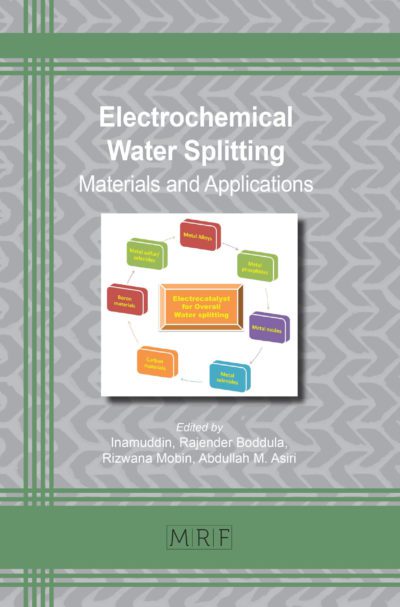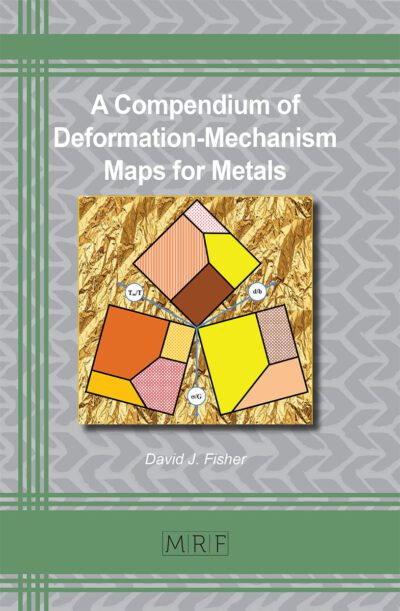Extraction of nickel from cathode material of lithium-ion batteries using pyroligneous acid
Cherry Nguyen, Philip Kwong
Abstract. The study aims to investigate the potential use of pyroligneous acid (PA) in extracting nickel from the cathode active material of lithium-ion batteries (LIBs). The efficiency of nickel leaching was assessed by varying extraction temperature, time, and solid-to-liquid ratio. Optimal conditions were determined to be at 70 ℃, 30 minutes, and a solid-to-liquid ratio of 20 g/L. Under these conditions, PA was able to extract up to 95% of nickel from the cathode active material. Kinetic studies revealed that nickel extraction by PA follows a chemical reaction control mechanism with an apparent activation energy of 31.8 kJ/kmol. Results from this study suggest that PA can be an cost-effective and efficient organic alternative to the harmful inorganic lixiviant commonly involved in the hydrometallurgical process of spent LIBs.
Keywords
LIBs Recycling, Nickel, Pyroligneous Acid, Metal Extraction
Published online 4/25/2025, 5 pages
Copyright © 2025 by the author(s)
Published under license by Materials Research Forum LLC., Millersville PA, USA
Citation: Cherry Nguyen, Philip Kwong, Extraction of nickel from cathode material of lithium-ion batteries using pyroligneous acid, Materials Research Proceedings, Vol. 53, pp 399-403, 2025
DOI: https://doi.org/10.21741/9781644903575-39
The article was published as article 39 of the book Decarbonization Technology
![]() Content from this work may be used under the terms of the Creative Commons Attribution 3.0 license. Any further distribution of this work must maintain attribution to the author(s) and the title of the work, journal citation and DOI.
Content from this work may be used under the terms of the Creative Commons Attribution 3.0 license. Any further distribution of this work must maintain attribution to the author(s) and the title of the work, journal citation and DOI.
References
[1] Chaudhary, V., et al., Insights into the Eco-Friendly Recovery Process for Valuable Metals from Waste Lithium-ion Batteries by Organic Acids Leaching. Separation & Purification Reviews, 2023: p. 1-18. https://doi.org/10.1080/15422119.2022.2164650
[2] Nguyen, R.T., et al., Global Electrification of Vehicles and Intertwined Material Supply Chains of Cobalt, Copper and Nickel. Resources, Conservation and Recycling, 2021. 167: p. 105198. https://doi.org/10.1016/j.resconrec.2020.105198
[3] Jones, B., R.J.R. Elliott, and V. Nguyen-Tien, The EV revolution: The road ahead for critical raw materials demand. Applied Energy, 2020. 280: p. 115072. https://doi.org/10.1016/j.apenergy.2020.115072
[4] Natarajan, S. and V. Aravindan, Recycling Strategies for Spent Li-Ion Battery Mixed Cathodes. Acs Energy Letters, 2018. 3(9): p. 2101-2103. https://doi.org/10.1021/acsenergylett.8b01233
[5] Liu, Y.L., P.X. Xing, and J.G. Liu, Environmental performance evaluation of different municipal solid waste management scenarios in China. Resources Conservation and Recycling, 2017. 125: p. 98-106. https://doi.org/10.1016/j.resconrec.2017.06.005
[6] Jha, M.K., et al., Recovery of lithium and cobalt from waste lithium ion batteries of mobile phone. Waste Management, 2013. 33(9): p. 1890-1897. https://doi.org/10.1016/j.wasman.2013.05.008
[7] Golmohammadzadeh, R., F. Faraji, and F. Rashchi, Recovery of lithium and cobalt from spent lithium ion batteries (LIBs) using organic acids as leaching reagents: A review. Resources Conservation and Recycling, 2018. 136: p. 418-435. https://doi.org/10.1016/j.resconrec.2018.04.024
[8] Tesfaye, F., et al., Improving urban mining practices for optimal recovery of resources from e-waste. Minerals Engineering, 2017. 111: p. 209-221. https://doi.org/10.1016/j.mineng.2017.06.018
[9] Choi, Y.-S., B.J. Ahn, and G.-H. Kim, Extraction of chromium, copper, and arsenic from CCA-treated wood by using wood vinegar. Bioresource Technology, 2012. 120: p. 328-331. https://doi.org/10.1016/j.biortech.2012.06.045
[10] Li, Z.C., et al., Disinfection and removal performance for Escherichia coli, toxic heavy metals and arsenic by wood vinegar-modified zeolite. Ecotoxicology and Environmental Safety, 2019. 174: p. 129-136. https://doi.org/10.1016/j.ecoenv.2019.01.124
[11] Zhang, Y.J., et al., Use of grape seed as reductant for leaching of cobalt from spent lithium-ion batteries. Journal of Industrial and Engineering Chemistry, 2018. 66: p. 86-93. https://doi.org/10.1016/j.jiec.2018.05.004
[12] Yu, M., et al., A more simple and efficient process for recovery of cobalt and lithium from spent lithium-ion batteries with citric acid. Separation and Purification Technology, 2019. 215: p. 398-402. https://doi.org/10.1016/j.seppur.2019.01.027
[13] Zheng, Y., et al., Lithium fluoride recovery from cathode material of spent lithium-ion battery. Rsc Advances, 2018. 8(16): p. 8990-8998. https://doi.org/10.1039/C8RA00061A
[14] Vieceli, N., et al., Recycling of Lithium-Ion Batteries: Effect of Hydrogen Peroxide and a Dosing Method on the Leaching of LCO, NMC Oxides, and Industrial Black Mass. ACS Sustainable Chemistry & Engineering, 2023. 11(26): p. 9662-9673. https://doi.org/10.1021/acssuschemeng.3c01238
[15] Yang, C., et al., Recovery of Valuable Metals from Spent LiNi0.8Co0.1Mn0.1O2 Cathode Materials Using Compound Leaching Agents of Sulfuric Acid and Oxalic Acid. Sustainability, 2022. 14(21): p. 14169. https://doi.org/10.3390/su142114169
[16] Liao, Y., et al., A novel ternary deep eutectic solvent for efficient recovery of critical metals from spent lithium-ion batteries under mild conditions. Journal of Environmental Chemical Engineering, 2022. 10(6): p. 108627. https://doi.org/10.1016/j.jece.2022.108627
[17] Gao, W.F., et al., Selective recovery of valuable metals from spent lithium-ion batteries – Process development and kinetics evaluation. Journal of Cleaner Production, 2018. 178: p. 833-845. https://doi.org/10.1016/j.jclepro.2018.01.040
[18] Meng, F., et al., Selective recovery of valuable metals from industrial waste lithium-ion batteries using citric acid under reductive conditions: Leaching optimization and kinetic analysis. Hydrometallurgy, 2020. 191. https://doi.org/10.1016/j.hydromet.2019.105160













